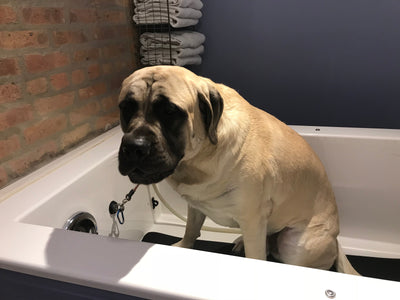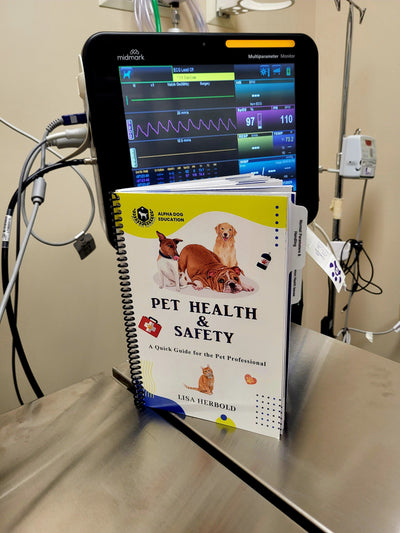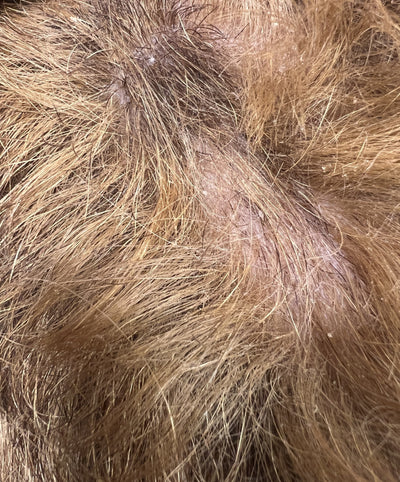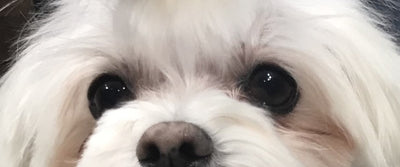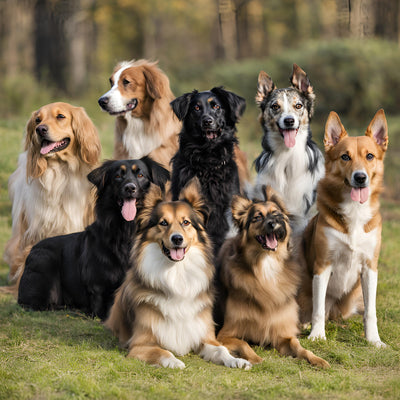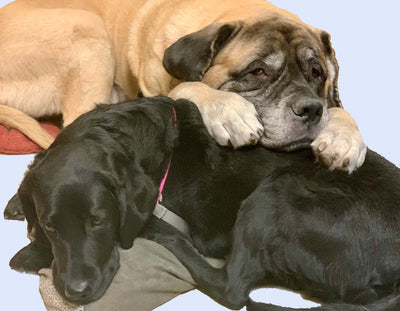Evolution of Dogs
Pin pointing when dogs Canis Familiaris became “man’s best friend” is half science and half guesswork with new discoveries adding to the broader story. The difficulty of tackling this topic stems from the timing of domestication. A few Old World Wolf species began the domestication process while we humans were in our hunting and gathering phase. Genetic evidence, as reported in Nature Communications, July 2017 issue, demonstrated that “modern European dogs emerged from a structured Neolithic population”. Neolithic dogs are believed to be a genetic mixture of village dogs, ancient dogs and Old World wolves ranging from Europe, Middle East, Centra Asia and South Asia dating back 20,000 and 40,000 years ago. This pattern is consistent with the human migration patterns from the Late Neolithic and Early Bronze age.1

During domestication dogs started to have noticeable genetic changes within 36 regions of their DNA effecting 122 genes. Most changes have revolved around the nervous system resulting in a variety of cognitive and behavioral changes creating adaptations more suitable to creating bonds with humans. Meanwhile, as we developed our agriculture, our new best friends coevolved beside us and developed genes for starch digestion in which modern dogs are able to digest carbohydrates five times better than wolves2.
The most noticeable behavioral changes revolve around social cues and problem-solving skills. Modern dogs are not efficient working together to solve specific problems, instead they will look to humans using social cues to solve them. 3 In 2016, The Canine Cognition Center at Yale published a study in the Journal Developmental Science indicating that “In contrast to children, dogs only copy a human’s actions if they are absolutely necessary for solving the task at hand”4 Other studies have proven that dogs and humans secrete oxytocin, a hormone linked to enhance the child-mother bond when peering into each other’s eyes.5
Today, dogs are considered the most diverse species on our planet. They have branched out into over 340 breeds as recognized by the World Canine Organization including the 193 breeds recognized by The American Kennel Club. Each breed exhibits distinct homogenous, phonotypical variances, most of which have occurred in the last 200 years.6
 Over the past 20 years, Elaine Ostrander and Heidi Parker, geneticists at the National Human Genome Research Institute in Bethesda, Maryland, and their colleagues have collected data from over 161 breeds. This study has discovered genetic patterns and as a result started building a “genome tree”, organizing inherited genetic groups into 23 distinct clades. These clades group breeds together by common ancestorial traits. It allows scientists and veterinarians to understand the development of specific breeds based on specific genetically inherited traits, mutations and diseases. “
Over the past 20 years, Elaine Ostrander and Heidi Parker, geneticists at the National Human Genome Research Institute in Bethesda, Maryland, and their colleagues have collected data from over 161 breeds. This study has discovered genetic patterns and as a result started building a “genome tree”, organizing inherited genetic groups into 23 distinct clades. These clades group breeds together by common ancestorial traits. It allows scientists and veterinarians to understand the development of specific breeds based on specific genetically inherited traits, mutations and diseases. “
“Having these clades will help veterinarians spot potential genetic problems, Parker says. For example, before vets couldn't really understand why a genetic disease called collie eye anomaly, which can distort different parts of the eye, and shows up in collies, border collies, and Australian shepherds, also occurs in Nova Scotia duck tolling retrievers. But the genetic analysis shows that this retriever has either collie or Australian shepherd ancestors that may have passed on the defective gene. "Mixing has resulted in the sharing of specific genomic regions harboring mutations which cause disease in very different breeds," Wayne says.”7
Categorizing Breeds
Over the past thousand years dogs have mainly been utilized for specific work commonly guarding the home, goods, or livestock or for hunting. At this time, most ancestors to the modern dogs or “foundation stock” as some breeders term them today were grouped as greyhounds, spaniels, poodles and mastiffs. In 1570, the physician, Dr. Johannes, Caius, published The Dogs of Britain laying the foundation for modern classification of breeds. These classifications were grouped as:
- Hunting (Harriers, Terriers, Bloodhounds, Site hounds, Setters and Spaniels)
- Spaniel Gentle or Comforter (Lap Dogs)
- Farm Dogs
- Mongrels
By the 1800s, dog breeding had exploded and new breeds were being developed at a rapid pace Dog breed clubs were popular, and by 1859, the first modern dog show was held in Newcastle-upon-Tyne, England for Sporting breeds only. Two years later, the first Non-Sporting Breed show was held in Birmingham, England. In 1873, the first national Kennel Club formed. Soon, Americans became interested and in 1884, a group of Sportsmen representing specific dog clubs came together and formed the American Kennel Club (AKC).
Today there are currently over 205 AKC registered breeds within 7 categories all grouped together by distinctive characteristics and functions specifically representing the purpose of the breed’s origin. Each year more breeds are recognized. To become an AKC registered breed, there are three main components.
- A Parent Club must actively prove an active following for the breed. A Parent Club, also known as a dog breed club, is an association of fanciers for a single, specific type / breed of dog. These clubs promote the health, well-being and standards by which genetic characteristics are established.
- Breed Standards must be established to describe the ideal physical trait, function and temperament, all of which serves as a guideline for AKC judges to evaluate each breed during competition.
- Genetic Verification to prove that a breed “always breeds true”. The breed must exhibit distinct homogenous, phonotypical traits that are always present over generational breeding.
AKC has evolved into a national organization that has set the standard for pure breed recognition and authentication. Registered breeders and puppies guarantee the breed meets the main components to prove breed origin and standardization. Meanwhile, AKC continues to provide competition at the local and national level for breed enthusiasts for any of the following: conformation, agility, performance sports and obedience.
Originally dogs were registered as Sporting Group or Non-Sporting Group. Later, dogs categorized as hounds and terriers split from the Sporting Group while dogs categorized as toy and working breeds were split from the Non-Sporting Group. Much later the herding category split from the Working Group. Currently, the Non-Sporting Group is literally every breed that is left, resulting in a wide variety of sizes, shapes, hair, function and history. Breeds waiting to be placed in the AKC registration ranks are recognized in the Miscellaneous Class and Foundation Stock Service.
Currently the AKC divides breeds into nine (7) main categories, each containing a few subcategories:
- Herding
- Hound
- Toy
- Non-Sporting
- Sporting
- Terrier
- Working
- Miscellaneous
- Foundation Stock Service (FSS)
Herding Group
The herding group once belonged in the working group but became its own category in 1983. The decision was made due to the large subcategory cattle and sheep herders that were also utilized to guard, pulling carts and sleds, and hunt. Originally, these breeds were used to guard, drive and herd livestock. Breeding for independence and high instinct drive has allowed these dogs to be extremely good at quick responses and problem solving. Each breed utilizes different methods to keep livestock in tightly packed herds. For example, Border Collies use a compelling stare where as other breeds use stern barks. Almost all nip at the heels to control the direction of livestock.
According to the AKC “Herding breeds have been bred to be intelligent, athletic, and diligent and are arguably the most trainable of all breeds, making them naturals for obedience work, agility, and herding trials. Through the years, responsible breeders have perpetuated the herding dogs’ natural instincts. They have evolved into independent but loyal dogs who are happiest when at work serving their owners. As long as they receive enough exercise and mental stimulation, herding dogs are wonderful, devoted pets who thrive on—and demand—human companionship.”
Breeds Include:
- Australian Cattle Dog
- Australian Shepherd
- Bearded Collie
- Beauceron
- Belgian Malinois
- Belgian Sheepdog
- Belgian Tervuren
- Bergamasco
- Berger Picard
- Border Collie
- Bouvier des Flandres
- Briard
- Canaan Dog
- Cardigan Welsh Corgi
- Collie
- Entlebucher Mountain Dog
- Finnish Lapphund
- German Shepherd Dog
- Icelandic Sheepdog
- Miniature American Shepherd
- Norwegian Buhund
- Old English Sheepdog
- Pembroke Welsh Corgi
- Polish Lowland Sheepdog
- Puli
- Pumi
- Pyrenean Shepherd
- Shetland Sheepdog
- Spanish Water Dog
- Swedish Vallhund
Hound Group
The hound group use to be part of the Sporting Group but have been separated since they are independent hunters. These breeds consist of many ancient breeds and are further divided into two subgroups: sighthounds and scenthounds. Sighthounts relay mainly on their keen eyesight to find prey. Once sited, these sleek, long-legged, deep chested breeds use explosive speed and wide peripheral vision to chase down swift game such as deer, elk and wild boar. Scenthounds use their powerful noses and wrinkly facial skin to capture and located prey. Many of the medium-sized hounds utilized both sight and scent for smaller game like rabbits and foxes.
Breeds Include:
- Afghan Hound
- American English Coonhound
- American Foxhound
- Azawakh
- Basenji
- Basset Hound
- Beagle
- Black and Tan Coonhound
- Bloodhound
- Bluetick Coonhound
- Borzoi
- Cirneco Dell’Etna
- Dachshund
- English Foxhound
- Grand Basset Griffon Vendeen
- Greyhound
- Harrier
- Ibizan Hound
- Irish Wolfhound
- Norwegian Elkhound
- Otterhound
- Petit Basset Griffon Vendeen
- Pharaoh Hound
- Plott Hound
- Portuguese Podengo Pequeno
- Redbone Coonhound
- Rhodesian Ridgeback
- Saluki
- Scottish Deerhound
- Sloughi
- Treeing Walker Coonhound
- Whippet
Toy Group
Toy breeds have been around for hundreds of years providing companionship to royalty, merchants and families. They have been bred to be affectionate, sociable and adaptable making them popular with apartment and urban dwellers. This group contains a large variety of shapes, colors and coat styles while some retain original traits from the larger breeds, they were bred down from offering a wide range of options for one’s lifestyle.
Breeds Include:
- Affenpinscher
- Brussels Griffon
- Cavalier King Charles Spaniel
- Chihuahua
- Chinese Crested
- English Toy Spaniel
- Havanese
- Italian Greyhound
- Japanese Chin
- Maltese
- Manchester Terrier
- Miniature Pinscher
- Papillon
- Pekingese
- Pomeranian
- Poodle (Toy)
- Pug
- Shih Tzu
- Silky Terrier
- Toy Fox Terrier
- Yorkshire Terrier
Non-Sporting Group
As best described by the AKC website, the non-sporting group is “A varied collection of breeds” that range in size, activity level, coat type and personalities. Many of these dogs have been retired from performing their original function and are now serve as companions. For example, Poodles no longer serve as retrievers, Dalmatians no longer run alongside fire trucks, Bulldogs no longer serve as bull-baiters. This is a fast
Breeds Include:
- American Eskimo Dog
- Bichon Frise
- Boston Terrier
- Bulldog
- Chinese Shar-Pei
- Chow Chow
- Coton De Tulear
- Dalmatian
- Finish Spitz
- French Bulldog
- Keeshond
- Lhasa Apso
- Lowchen
- Norwegian Lundhund
- Poodle
- Schipperke
- Shiba Inu
- Tibetan Spaniel
- Tibetan Terrier
- Xoloitzcuintli
Sporting Group
The sporting group emerged with the invention of guns. Beginning in the 1600s, sporting dogs were bred to assist sports hunters in finding, pointing, flushing, holding, and retrieving game. This group consists of four subcategories spaniels, pointers, retrievers and setters. These breeds are very athletic, eager-to-please, good natured and very energetic. Today, besides hunting, they are used as therapy, assistance, and search and rescue work.
Spaniels were bred to originally flush game out of dense bush but transitioned to mark where shot game landed and retrieve it. Their soft muzzle easily retrieves game without damaging it. Pointers and Setters instinctually freeze or “set” to allow the hunter to net game or to give direction to a dog that can flush the prey. Retrievers were bred primarily to retrieve birds or other prey and return them to the hunter without damage. Thus, many retrievers have soft muzzles to prevent damaging prey, webbed feet for swimming and hardy, water-resistant coats for harsh weather and watery conditions. Most importantly, retrievers have a high drive to please which allows them to be trained to retrieve items over long distances.
Breeds Include:
- American Water Spaniel
- Barbet
- Boykin Spaniel
- Brittany
- Chesapeake Bay Retriever
- Clumber Spaniel
- Cocker Spaniel
- Curly-Coated Retriever
- English Cocker Spaniel
- English Setter
- English Springer Spaniel
- Field Spaniel
- Flat-Coated Retriever
- German Shorthaired Pointer
- German Wirehaired Pointer
- Golden Retriever
- Gordon Setter
- Irish Red and White Setter
- Irish Setter
- Irish Water Spaniel
- Labrador Retriever
- Lagotto Romagnolo
- Nederlandse Kooikerhondje
- Nova Scotia Duck Tolling Retriever
- Pointer
- Spinone Italiano
- Sussex Spaniel
- Vizsla
- Weimaraner
- Welsh Springer Spaniel
- Wirehaired Pointing Griffon
- Wirehaired Vizsla
Terrier
Most terriers evolved in the British Isles to guard, bull-bait, and hunt vermin and varmints of all sizes. The name “terrier”, derived from the Latin word terra, meaning “earth” encapsulates the main function of this group to burrow into the earth or chase prey into their underground tunnels or dense brush. This group of dogs are feisty, self-confident, and tenacious. Their distinct wiry coats are weather resistant, and naturally pulls out as they enter dense brush or tunnels. As a result, even those few breeds with distinctive double coats, consisting of soft undercoats and wiry jackets that require special grooming. Their outer coats need to be plucked, called hand stripping, to remove dead coat that would normally pull out during daily activities.
Breeds Include:
- Airedale Terrier
- American Hairless Terrier
- American Staffordshire Terrier
- Australian Terrier
- Bedlington Terrier
- Border Terrier
- Bull Terrier
- Cairn Terrier
- Cesky Terrier
- Dandie Dinmont Terrier
- Glen of Imaal Terrier
- Irish Terrier
- Kerry Blue Terrier
- Lakeland Terrier
- Manchester Terrier
- Miniature Bull Terrier
- Miniature Schnauzer
- Norfolk Terrier
- Norwich Terrier
- Parson Russell Terrier
- Rat Terrier
- Russell Terrier
- Scottish Terrier
- Sealyham Terrier
- Skye Terrier
- Smooth Fox Terrier
- Soft Coated Wheaten Terrier
- Staffordshire Bull Terrier
- Welsh Terrier
- West Highland White Terrier
- Wire Fox Terrier
Working
Working dogs were bred to assist humans in a wide range tasks as draft dogs, hunters, military and guardians. Many are the original, ancient breeds used as “foundation stock” for other modern breeds. These dogs are medium to extremely large in stature and are known for their athleticism, strength, courage, and loyalty. These group is extremely versatile and continues to be used in their original function today.
Breeds Include:
- Akita
- Alaskan Malamute
- Anatolian Shepherd Dog
- Bernese Mountain Dog
- Black Russian Terrier
- Boerboel
- Boxer
- Bullmastiff
- Cane Corso
- Chinook
- Doberman Pinscher
- Dogo Argentino
- Dogue de Bordeaux
- German Pinscher
- Giant Schnauzer
- Great Dane
- Great Pyrenees
- Greater Swiss Mountain Dog
- Komondor
- Kuvasz
- Leonberger
- Mastiff
- Neapolitan Mastiff
- Newfoundland
- Portuguese Water Dog
- Rottweiler
- Saint Bernard
- Samoyed
- Siberian Husky
- Standard Schnauzer
- Tibetan Mastiff
References
Ancient European dog genomes reveal continuity since the Early . Retrieved October 2, 2020, from https://www.nature.com/articles/ncomms160822
Dog Breeds - Types Of Dogs - American Kennel Club. https://www.akc.org/dog-breeds/.
Dog DNA Study Yields Clues to Origins of Breeds. https://www.nationalgeographic.com/animals/2004/05/dog-dna-study-yields-clues-to-origins-of-breeds/.
Dog Gazes Hijack the Brain’s Maternal Bonding System | Science ... https://www.smithsonianmag.com/science-nature/dog-gazes-hijack-brains-maternal-bonding-system-180955019/.
Dogs Ignore Bad Advice That Humans Follow | YaleNews. https://news.yale.edu/2016/09/26/dogs-ignore-bad-advice-humans-follow.4
How Did Dogs Get to Be Dogs? | Live Science. https://www.livescience.com/8405-dogs-dogs.html.
The Evolutionary History of Dogs in the Americas. https://science.sciencemag.org/content/sci/361/6397/81.full.pdf.
The Origins of Dogs | Discover Magazine. https://www.discovermagazine.com/planet-earth/the-origins-of-dogs.
Origin of Domestic Dogs | The Scientist Magazine®. https://www.the-scientist.com/news-opinion/origin-of-domestic-dogs-38399.
Original North American Dogs Descended From Siberian Populations. https://www.the-scientist.com/news-opinion/original-north-american-dogs-descended-from-eurasian-populations-64454.
Issue: Cell Reports. https://www.cell.com/cell-reports/issue?pii=S2211-1247(16)X0018-6.7
The Incredible Explosion of Dog Breeds | Live Science. https://www.livescience.com/8420-incredible-explosion-dog-breeds.html.6
The 7 AKC Dog Breed Groups Explained. https://www.akc.org/expert-advice/lifestyle/7-akc-dog-breed-groups-explained/.
What Makes a Dog? | Science News for Students. https://www.sciencenewsforstudents.org/article/what-makes-dog.
When and How Did Wolves Become Dogs? | Science | Smithsonian ... https://www.smithsonianmag.com/science-nature/how-wolves-really-became-dogs-180970014/.1
Why Wolves Work Together While Wild Dogs Do Not | Smart News ... https://www.smithsonianmag.com/smart-news/wolves-out-score-wild-dogs-when-it-comes-cooperation-180965293/.3


